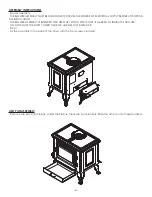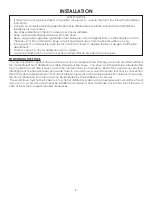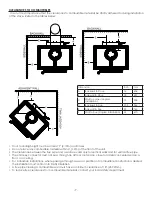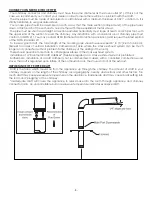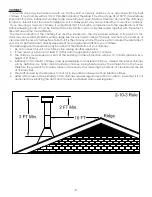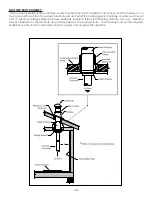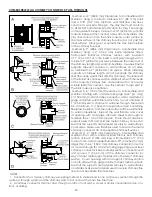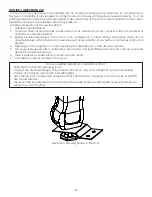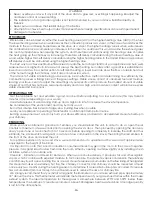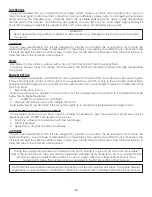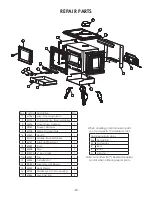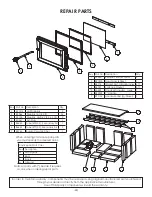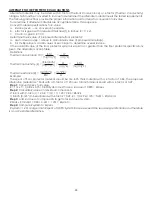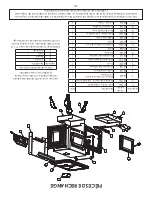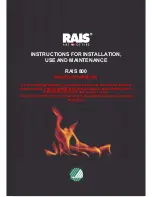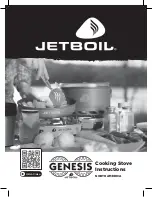
-17-
TO PREVENT CREOSOTE BUILD UP
•
Always burn dry wood. This allows clean burns and higher chimney temperatures, therefore less creosote
deposit.
•
Leave the air control full open for about 5 min. every time you reload the stove to bring it back to proper
operating temperatures. The secondary combustion can only take place if the firebox is hot enough.
•
Always check for creosote deposit once every two months and have your chimney cleaned at least once a
year.
If a chimney or creosote fire occurs, close all dampers immediately. Wait for the fire to go out and the heater to
cool, then inspect the chimney for damage. If no damage results, perform a chimney cleaning to ensure there is
no more creosote deposits remaining in the chimney.
ASH DISPOSAL
Whenever ashes get 3 to 4 inches deep in your firebox or ash pan, and when the fire has burned down and
cooled, remove excess ashes. Leave an ash bed approximately 1 inch deep on the firebox bottom to help
maintain a hot charcoal bed.
Ashes should be placed in a metal container with a tight-fitting lid. The closed container of ashes should be
placed on a noncombustible floor or on the ground, away from all combustible materials, pending final disposal.
The ashes should be retained in the closed container until all cinders have thoroughly cooled.
SMOKE AND CO MONITORS
Burning wood naturally produces smoke and carbon monoxide(CO) emissions. CO is a poisonous gas when
exposed to elevated concentrations for extended periods of time. While the modern combustion systems in
heaters drastically reduce the amount of CO emitted out the chimney, exposure to the gases in closed or confined
areas can be dangerous. Make sure you stove gaskets and chimney joints are in good working order and sealing
properly to ensure unintended exposure. It is recommended that you use both smoke and CO monitors in areas
having the potential to generate CO.
CAUTIONS:
•
Ashes could contain hot embers even after two days without operating the stove.
•
The ash pan can become very hot. Wear gloves to prevent injury.
• Never burn the stove with the ash trap open. This would result in over firing the stove. Damage to the stove
and even house fire may result.
MAINTENANCE
Your wood stove is a high efficiency stove and therefore requires little maintenance. It is important to perform
a visual inspection of the stove every time it is emptied, in order to insure that no parts have been damaged,
in which case repairs must be performed immediately. Inspect and clean the chimney and connector pipe
periodically for creosote buildup or obstructions.
GLASS
•
Inspect and clean the glass regularly in order to detect any cracks. If you spot one, turn the stove off
immediately. Do not abuse the glass door by striking or slamming shut. Do not use the stove if the glass is
broken.
•
If the glass on your stove breaks, replace only with the glass supplied from your heater dealer. Never
substitute other materials for the glass.
•
To replace the glass, remove the screws retaining the glass mouldings inside the door. Remove the
mouldings and replace the damaged piece with a new one. Perform the procedure backwards after
replacing. When replacing the glass, you should change the glass gasket to make sure you keep it sealed.
•
Never wash the glass with a product that may scratch. Use a specialized product, available in the stores
where wood stoves are sold. The glass should be washed only when cold.
Summary of Contents for AWC31
Page 24: ... 24 NOTES ...


